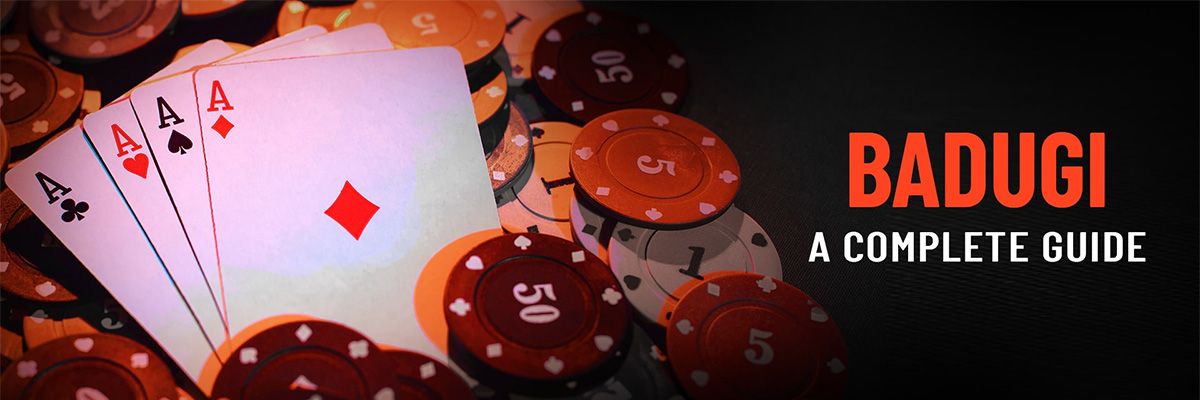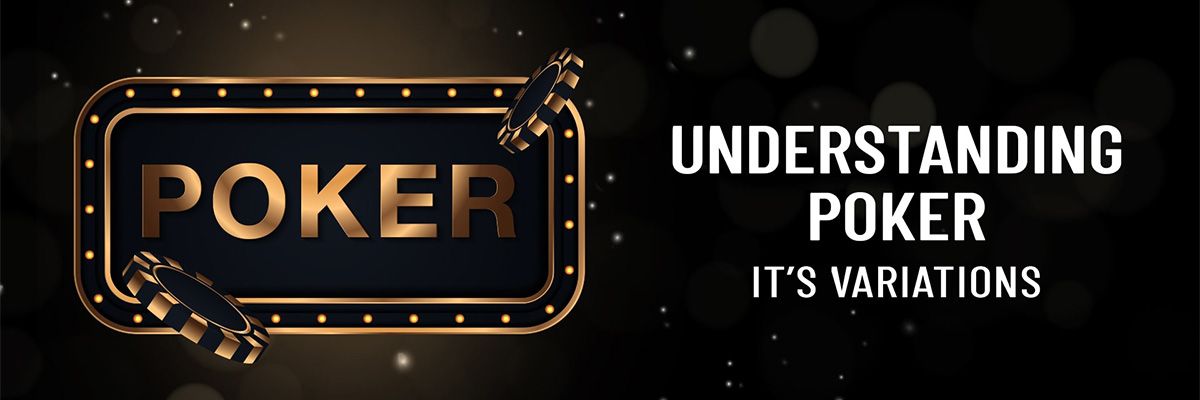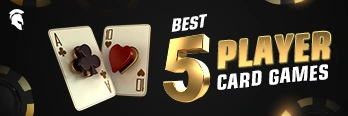The Complete Guide to An Upside-Down Poker Game:
Badugi Poker One would think that in any card game, especially poker, the highest hand would be the best hand. Right?
Wrong! Welcome to the world of upside-down hands, the world of Badugi Poker. If you are still confused by this, fear not, we are here with a complete guide to Badugi Poker. With all the fun Badugi rules at your disposal.
Badugi poker is a topsy turvy variation of poker that will surely interest you owing to its unique Badugi rules and hand rankings. Even a hand in this game is called a Badugi. Another interesting fact to know about this game, is that the word is considered to have originated from the Korean word ‘Baduk’ which roughly translates to “a black and white pattern”. It is found in online poker rooms and has also featured at the “dealer’s choice” events at the World Series of Poker (WSOP).
Badugi poker belongs to the draw variant of poker in which players may discard cards from their hand and replace their cards with new ones from the deck. This allows for a more dynamic game where the tables can tilt in your favour at any given point!
In general, Badugi poker can also be considered a lowball poker version, similar to 2-7 Triple Draw and the likes, because the ‘worst hand’ or in this case the ‘worst Badugi’ wins.But in reality, the Badugi rules fall into a category of their own since it is played with four pocket cards, unlike the rest. The quirks of this game will leave you itching to try your hand at it as soon as you can.
The main goal? Make the lowest hand possible and that too, all in different suits. The lowest possible Badugi is A-2-3-4 but all in different suits.
So let’s dive right into the Badugi rules and set them straight.
1. Hand Rankings
The first and foremost thing to understand in any poker game is obviously where your hand ranks. Badugi poker is no different. Well, maybe a little. In a hand, the ace counts as a low card only and to win the pot a player needs the lowest four-card hand possible.
If there is no four-card hand the lowest three-card hand wins and the like.
In Badugi poker straights do not exist, four cards in a row would not spoil your hand, but if you have two or more cards belonging to the same suit, the lowest card will be counted. Further, in a pair again, only one card will be counted. Both suited and paired cards make for a bad hand.
Let’s go through some of the high four-card badugis:
- The “four-high” Badugi is an A,1,2,3 all in different suits, for a Badugi player, this is the hand that dreams are made of.
- Next, we have an Eight high Badugi; 8,7,6,5 with eight as the highest card and of all different suits once again.
- A little less strong than an Eight high that would be a King High Badugi, with the king as the highest card and all other cards from different suits.
Now let us look at what would make up a three-card Badugi.
- Nine of Hearts, 7 of Diamonds, 4 of Spades, 2 of Spades: This is a three-card Badugi since the Four and Deuce are both of Spades, i.e. the same suit. The player can use the lower card of the paired suit, in this case, the deuce to make the three-card hand. Here the hand would be 9 of Hearts, 7 of Diamonds, 2 of Spades to make a Nine high Badugi. Always remember, a four-card Badugi will beat a three-card Badugi, no matter what the ranks.
- Six of cloves, 6 of spades, 3 of diamonds, 3 of hearts: in this case although the suits are all different the player is still left with unique two cards to play. This set of cards could be useful in a normal game, but according to the Badugi rules, they are not much more worthy than that pile of monopoly notes we played with as kids.
2. Blinds
In the case of blinds,the Badugi rules are similar to other flop based games like Texas Hold’em and Omaha. The blinds make the game engaging at the table. The players to the left of the dealer button are assigned the small and big blinds, and then the order in which the cards are to be dealt is decided accordingly.
At the point that a player first buys into the game, they have the option of either waiting for the big blind before playing or posting a blind equivalent or the big blind to be dealt to them at that moment itself. This is possible unless and until a player is seated in the small blind position in which case the player will have to wait for the next hand to be able to get in on the action.
3. The Pre-Draw
The blinds are posted, the stakes are decided, now what? The hands swoop in next in the Badugi rules just like in other variants of poker.
Badugi poker consists of four betting rounds and three drawing rounds. Unlike other poker games, where the rounds are called pre-flop and flop, rounds in this game are called draws.
The Badugi rules dictate that four cards be dealt (face down) as opposed to the usual two in the cult favourite Texas Hold’em variant. Once the cards are dealt, the first round of betting begins.
Commencing with the player to the left of the big blind and proceeding clockwise, every player has three options; to fold their hand, call the existing bet or to raise it.
At this point, a player must understand the betting actions that a game of Badugi permits. Although these actions are identical in the major poker variants.
let us quickly recap them for you.
- Check: A player can pass the action to their left without making a wager. This option can be used when there is no existing bet in the round.
- Bet: a player can make the first wager of the betting round, and other players will then have to match the bet or fold their cards.
- Fold: When a player decides to cut their losses due to a weak hand or a similar reason by not matching a bet. This implies that a player has effectively forfeited the prize pot.
- Call: A player may decide to match an existing wager exactly and continue the hand this is called.
- Raise: A player may decide to raise the existing wager in a round which forces the original better to either match the raise or fold their cards.
- Re-raise: A player who decides to raise the stakes after the first raise is said to be re-raising it.
4. The Draw
After the pre-draw betting is completed, the players can decide which cards they would like to discard after strategizing their gameplay. The Badugi rules surprisingly allow players to discard any number of cards. Yes, even all of them. On the other hand, if players wish to keep their hand intact, they have the “stand pat” option. This is the option to draw nothing.
This is discarding or stand putting, which starts with the small blind and again assumes the clockwise direction. The formula is basic, draw as many cards as you discard and you are good to go.
5. The Post Draw
These draws occur before every betting round. The draws and bets are performed around three times in Badugi. Two of the betting rounds are followed by an opportunity to draw and the third in followed by a dramatic showdown.
This structure of the betting rounds sounds familiar because it is. The Badugi rules in this scenario are the same as in other triple draw formats like the 2-7 Triple Draw.
6. The Showdown
This part is probably the most awaited in a game of Badugi poker. So let’s see what the Badugi rules say about it. Once the players have gone through their draws and discards, their awaited bets are in, the showdown begins. Players simply reveal their close kept secret hands and the pot full of winnings goes to the player with the strongest Badugi!
Some useful tips for Badugi poker
Choices aren’t always the best in a game of poker. When drawing additional cards, a player must keep in mind that an additional card can not only improve a hand but can also make it astonishingly worse. At times even a King-High hand can be enough to rake in the pot. Observation becomes key in a draw game since you can determine an opponent’s hand by noticing them draw cards from the stack.
At the risk of letting you in on a secret, consider this, players with a four-card Badugi won’t risk drawing a card that may spoil their hand and convert it into a three-card one! As opposed to this, when an opponent is choosing to stand pat, it could mean that they have a hand stronger than a King High. This is when you can choose to break your initial hand and start drawing cards again, all the while hoping for a stronger Badugi.
This comprehensive guide should help you master the game win a few games and experience an action-packed night at the table.
If you are craving some more action and then be sure to log on to Spartan Poker and get in on the fun-filled rollercoaster poker tournaments that we offer right from the comfort of your own home.

















